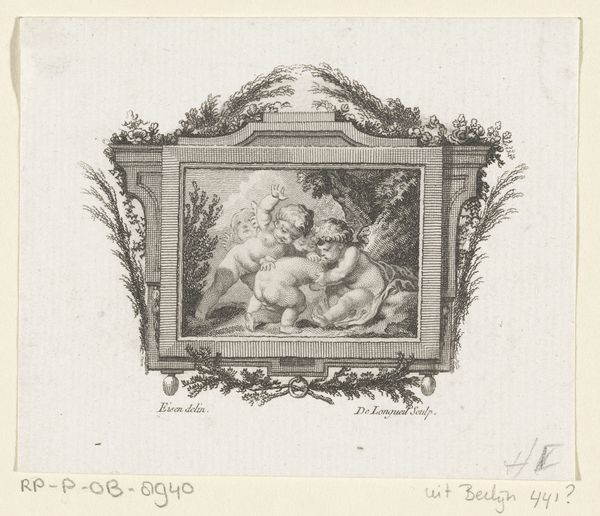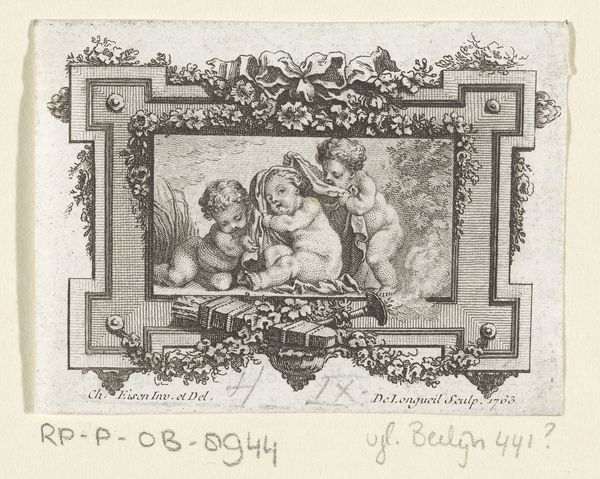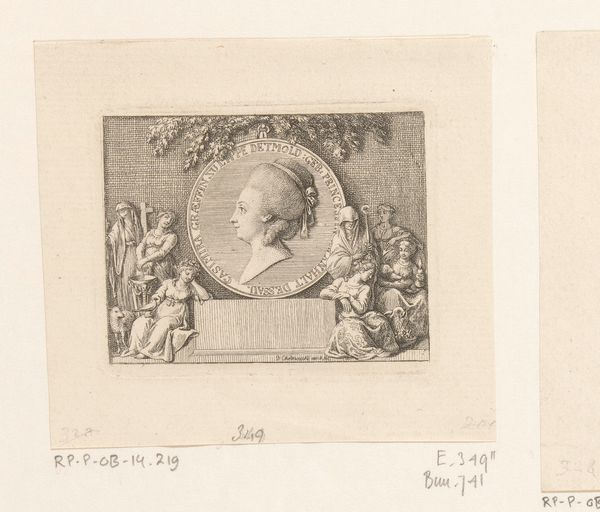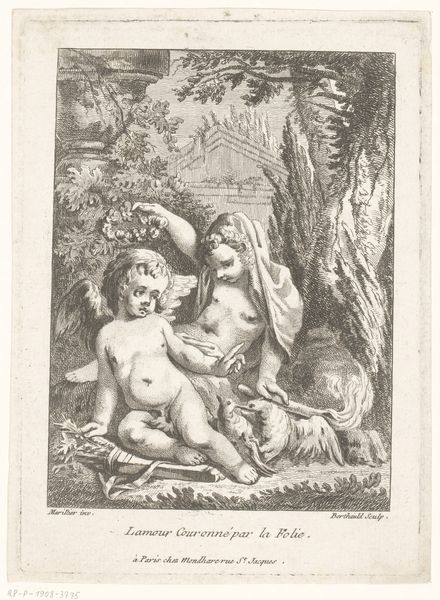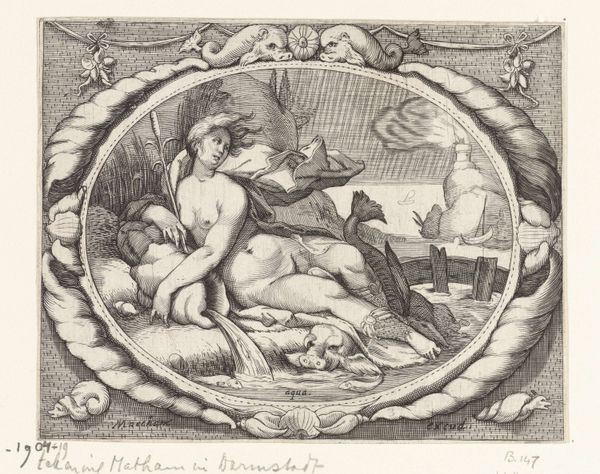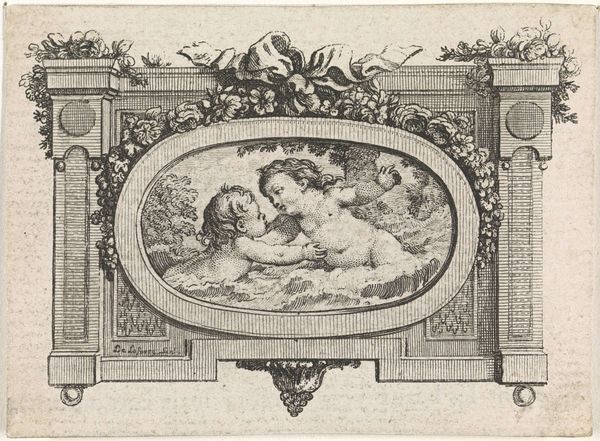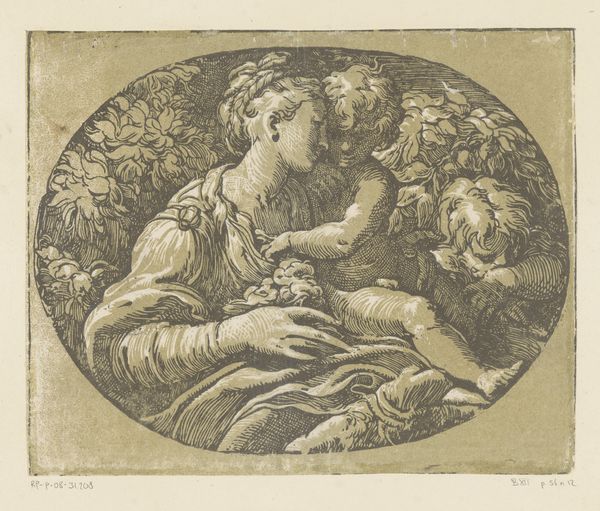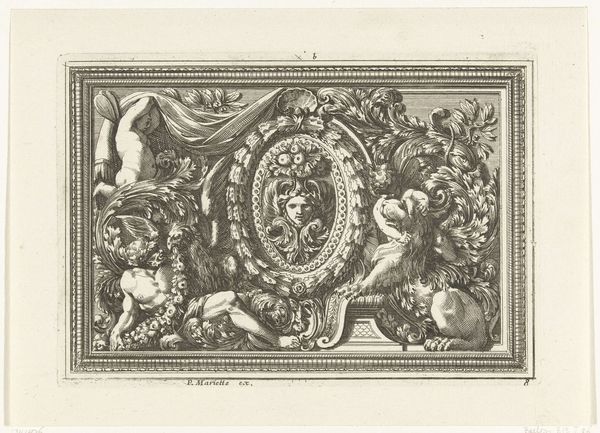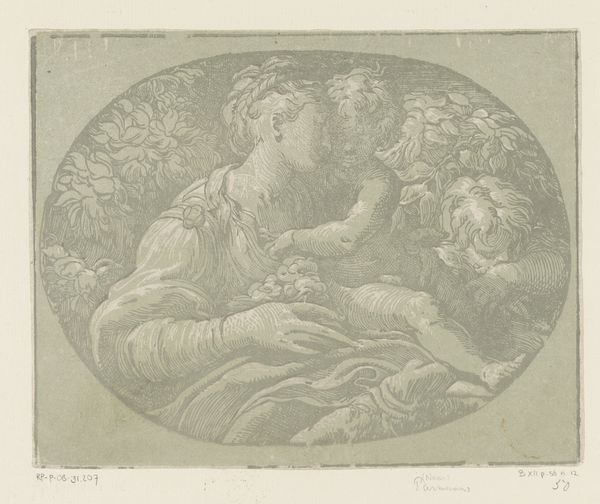
print, engraving
#
allegory
# print
#
figuration
#
engraving
#
rococo
Dimensions: height 52 mm, width 69 mm
Copyright: Rijks Museum: Open Domain
Curator: Ah, what a charming little vignette! Before us, we have an engraving called “Vignet met twee putti,” made around 1763 by Joseph de Longueil. It's delightful, wouldn’t you agree? Editor: It’s so tiny and incredibly intricate! Look at the crispness of the lines. It's made with such care, and there are so many of them packed in such a small area! You can see all that labor there to begin with. I bet the artist even crafted some of his tools? Curator: The putti, or cherubs, are a strong symbol here. In the Rococo period, they represented love, innocence, and divine connection. Notice their embrace, almost indistinguishable from one another; they signify a united ideal of pure love. Editor: But how much of that love and beauty actually was available for the many people that were never commissioned into paintings like these? Looking at the image, there are two entities within the design—these little plump babies and the border they rest on. The actual engraving seems pretty resourceful because you’ve got an economy of detail throughout to give a big result with fine lines. Curator: Certainly, there's a dialogue at play between the cherubic image and the architectural frame; there's the symbol of the intimate, nestled within formal, societal structure, ornamented with foliage— a wild idea tempered within a construct. Editor: And consider how these prints circulated. Engravings like this one allowed for wider access to imagery that, prior, may only have been afforded to the wealthy who would commission paintings; this puts the art object into the market where a budding merchant class or other wealthy citizens can purchase engravings without buying original artwork, so they get access to beautiful art without that commission or that cost. Curator: I agree, this would've carried cultural meaning, especially regarding ideals of love. But to move from broad society to its psychological impact… I imagine this evokes ideas of idealized kinship, or even the longing for uncomplicated affection. Editor: Yes! But also, in that accessibility, we could think about how these materials played a role in building the social standing of others, the middle and artisan classes. Thank you for showing me such a wonderful and tiny treasure. I will think a lot about materiality of production and social roles after today. Curator: And I’ll ponder the human needs that visual symbology aims to meet. It's incredible what a small vignette can conjure.
Comments
No comments
Be the first to comment and join the conversation on the ultimate creative platform.

